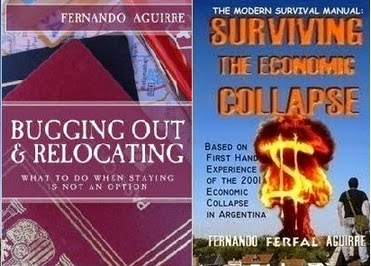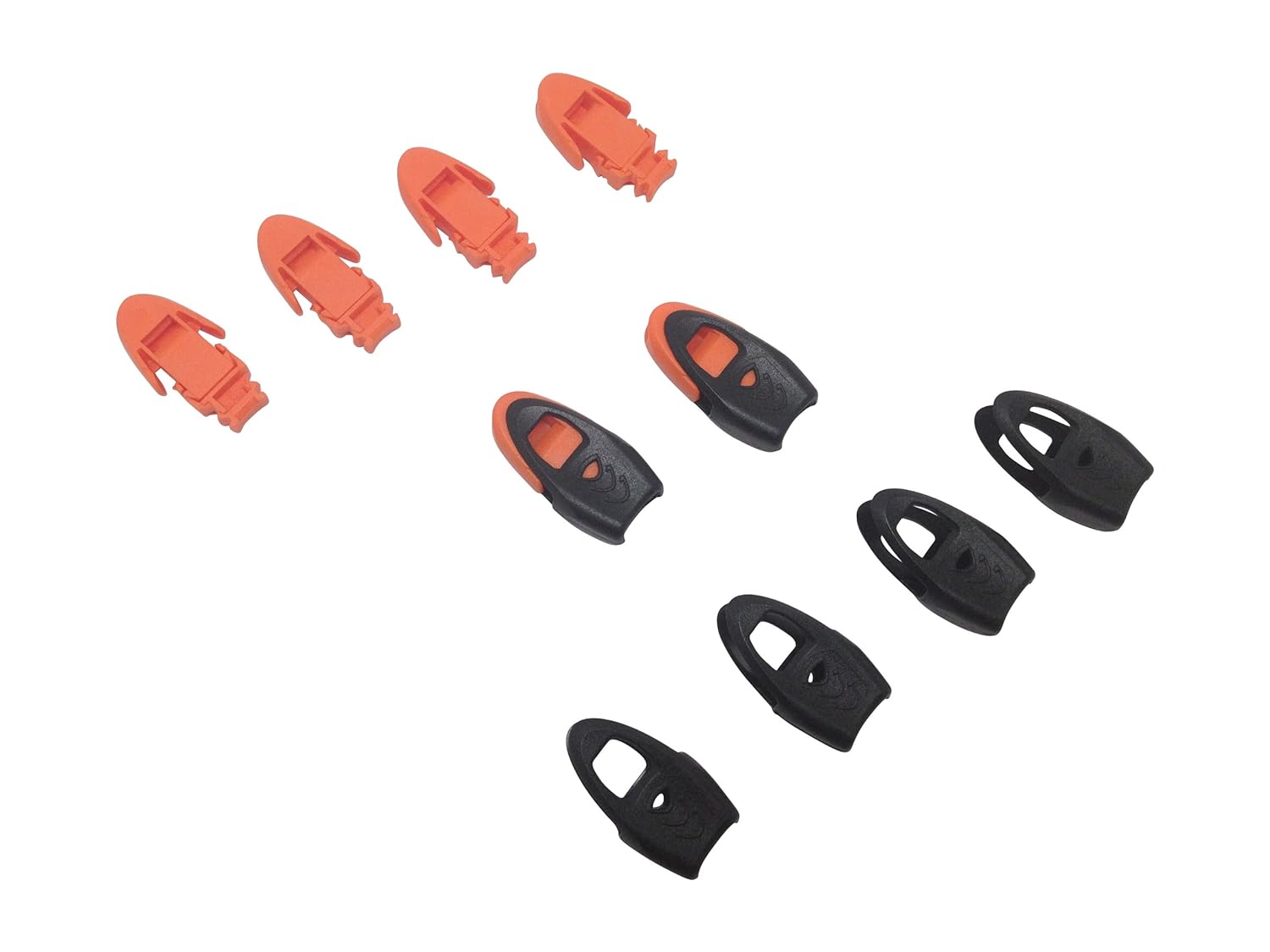The following article is reposted from
International Rescue Committee. Please, do check their website and consider making a donation so as to help men, women and children that desperately need it.
FerFAL
What refugees bring when they run for their lives
September 4, 2015 by
The IRC
This year, nearly 100,000 men, women and children from war-torn
countries in the Middle East, North Africa and South Asia have fled
their homes and traveled by rubber dinghies across the Aegean Sea to
Lesbos, Greece.
Refugees travel light, for their trek is as dangerous as it is
arduous. They are detained, shot at, hungry. Smugglers routinely exploit
them, promising safety for a price, only to squeeze them like sardines
into tiny boats. Most have no option but to shed whatever meager
belongings they may have salvaged from their journeys. Those allowed to
bring extra baggage aboard often toss it overboard, frantically dumping
extra weight as the leaky boats take on water.
Few arrive at their destinations with anything but the necessities of life. The
International Rescue Committee
asked a mother, a child, a teenager, a pharmacist, an artist, and a
family of 31 to share the contents of their bags and show us what they
managed to hold on to from their homes. Their possessions tell stories
about their past and their hopes for the future.
“You will feel that you are a human. You are not just a number.”
A mother
Name: Aboessa*
Age: 20
From: Damascus, Syria
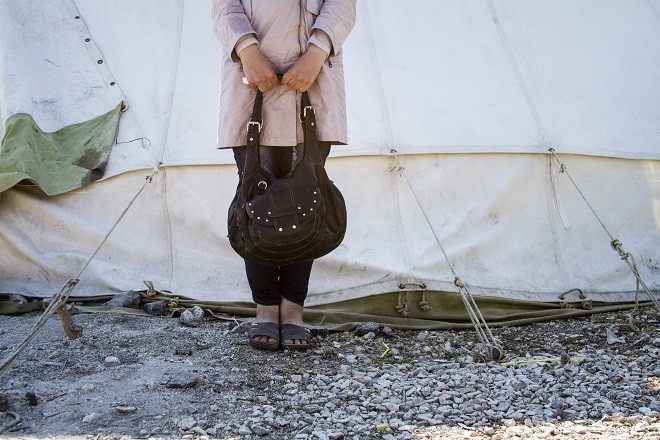
When vicious fighting erupted in Yarmouk, an unofficial camp for
Palestinians just south of the Syrian capital, Aboessa managed to escape
with her husband and their 10-month-old daughter, Doua. After crossing
the border to Turkey, they spent one week sheltering in another forlorn
camp before jumping into a rubber raft bound for the safe shores of
Europe.
The Turkish police patrolling the coast stopped them and detached the
boat’s motor in order to force them to turn back, but the refugees kept
going, steering the boat through the sea’s strong currents with
makeshift paddles.
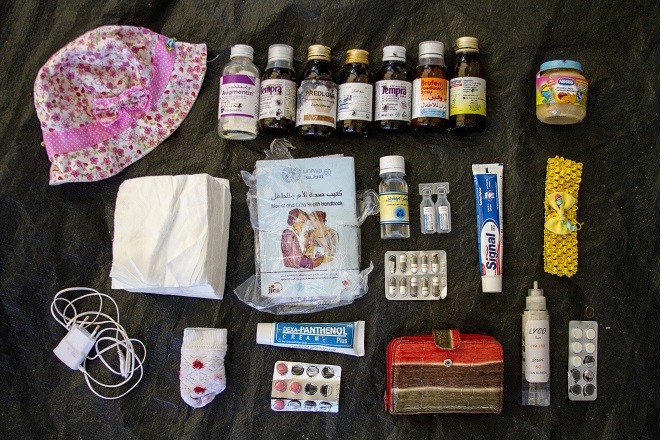
Hat for the baby
An assortment of medication, a bottle of sterile water, and a jar of baby food
A small supply of napkins for diaper changes
A hat and a pair of socks for the baby
Assortment of pain relievers, sunscreen and sunburn ointment, toothpaste
Personal documents (including the baby’s vaccination history)
Wallet (with photo ID and money)
Cell phone charger
Yellow headband
“Everything is for my
daughter to protect her against sickness. When we arrived in Greece, a
kind man gave me two jars of food. Another man gave us biscuits and
water when he saw my baby.”
A child
Name: Omran*
Age: 6
From: Damascus, Syria
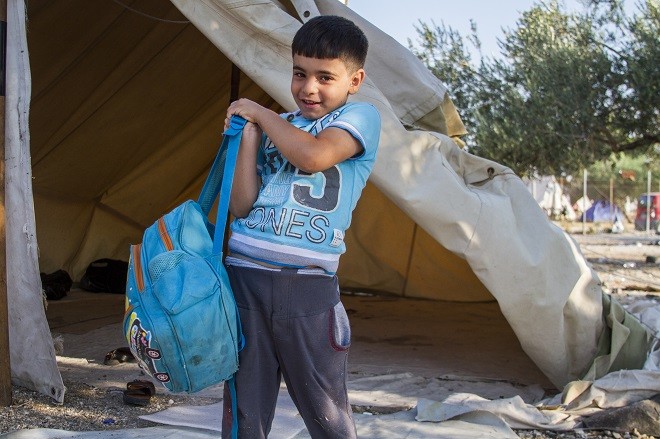
Little Omran, sporting a cheerful blue shirt, is on his way to
Germany with his extended family of five to live with relatives. Because
his parents knew they would travel through forests to avoid detection,
they made sure to pack bandages for scrapes and cuts.
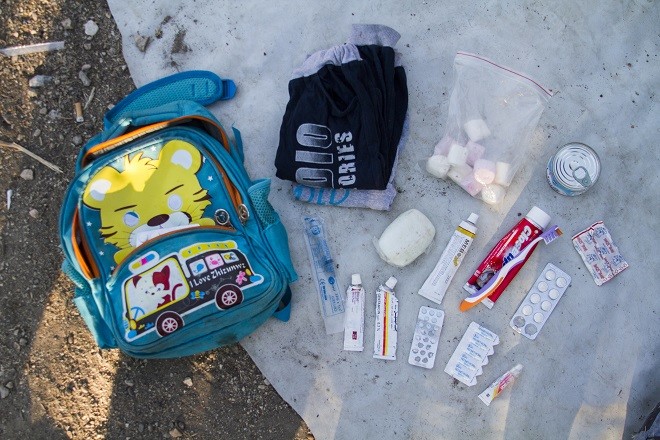
1 pair of pants, 1 shirt
A syringe for emergencies
Marshmallows and sweet cream (Omran’s favorite snacks)
Soap, toothbrush and toothpaste
Bandages
A teenager
Name: Iqbal*
Age: 17
From: Kunduz, Afghanistan
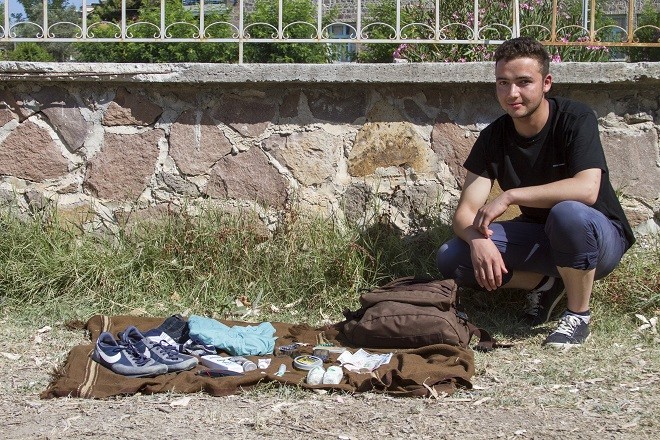
Iqbal dragged his weary body out of the boat with only a backpack.
The teenager had traveled hundreds of miles and dodged bullets to escape
from the warring province of Kunduz in northern Afghanistan, fleeing
east to Iran, then traveling by foot to Turkey. Now in Lesbos, he’s
uncertain of where to go next. He has kept in touch with a friend who
already made the journey to Germany. He has a brother studying in
Florida.
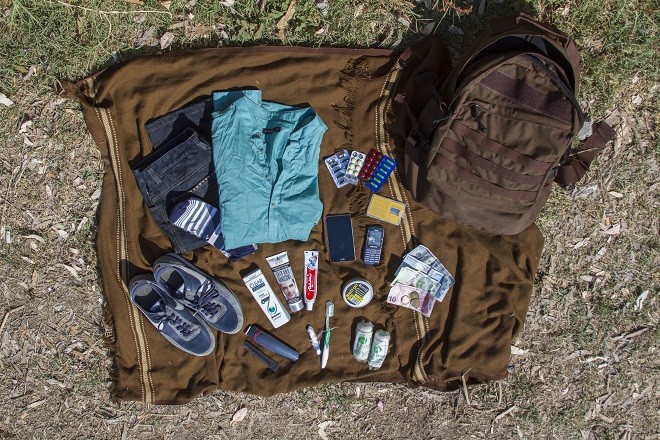
1 pair of pants, 1 shirt, 1 pair of shoes and 1 pair of socks
Shampoo and hair gel, toothbrush and toothpaste, face whitening cream
Comb, nail clipper
Bandages
100 U.S. dollars
130 Turkish liras
Smart phone and back-up cell phone
SIM cards for Afghanistan, Iran and Turkey
“I want my skin to be
white and hair to be spiked — I don’t want them to know I’m a refugee. I
think that someone will spot me and call the police because I’m
illegal.”
A pharmacist
Name: Anonymous
Age: 34
From: Syria
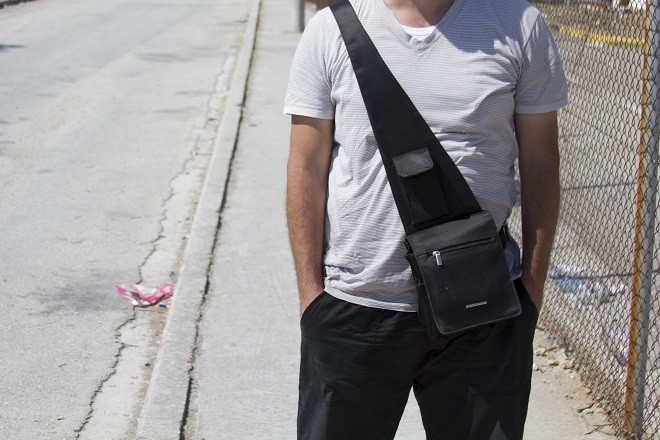
When war broke out in Syria, the pharmacist’s father would recall
fond memories of Germany, where he lived for eight years while
practicing medicine there. The pharmacist wanted a similar life of peace
and hope. He fled with his family to Turkey, where he met a smuggler
who arranged his trip to Europe.
With one bag strapped across his chest, the pharmacist climbed into
an overcrowded dinghy with 53 others, including a handful of young
children. Miraculously, the group made the crossing safely until, near
the shores of Greece, they were met by the coast guard, shouting at them
to stop the boat.
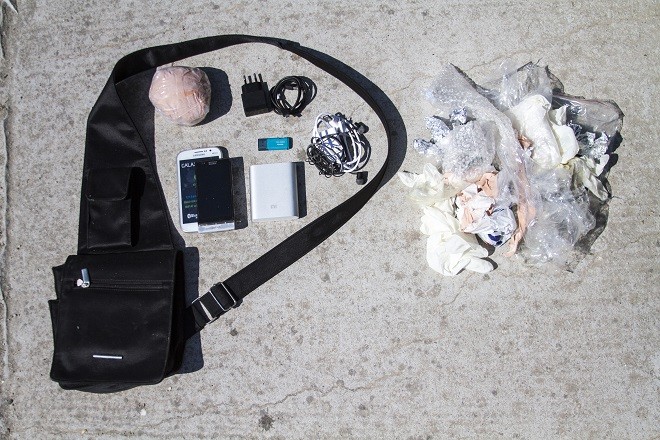
Money (wrapped to protect it from water)
Old phone (wet and unusable) and new smart phone
Phone chargers and headphones (plus extra battery charger)
16GB flash drive (containing family photos)
“We didn’t realize it was the police. We were told by friends not to
stop because they will take you back to Turkey. We didn’t know the Greek
language. We couldn’t understand what they were saying. We held the
children. I thought to myself, ‘Let me reach the beach and anything you
say I will do.’”
Their boat was punctured and everyone ended up in the sea. The pharmacist treaded water for 45 minutes before he was rescued.
[Read about the pharmacist’s full journey from Aleppo to Germany]
“I had to leave behind
my parents and sister in Turkey. I thought, if I die on this boat, at
least I will die with the photos of my family near me.”
An artist
Name: Nour*
Age: 20
From: Syria
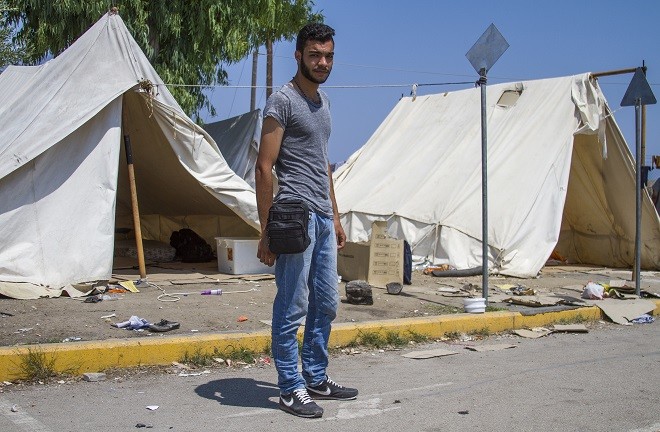
Nour has a passion for music and art. He played guitar in Syria for
seven years and painted. As bombs and gunfire echoed in the distance,
Nour grabbed the items closest to his heart before leaving for
Turkey — things that today evoke bittersweet memories of home.
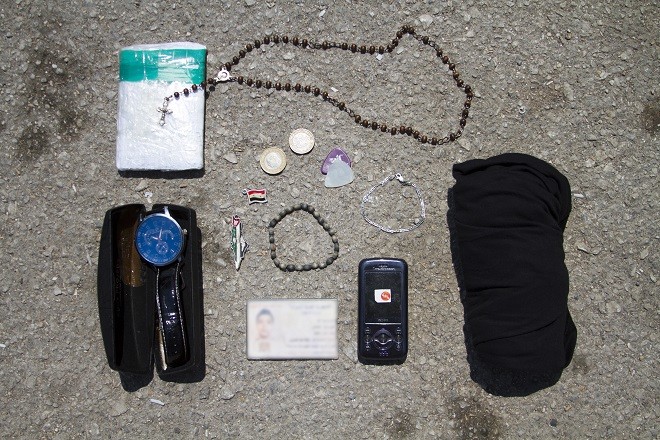
Small bag of personal documents
A rosary (gift from his friend; Nour doesn’t let it touch the floor)
A watch (from his girlfriend; it broke during the journey)
Syrian flag, Palestinian charm, silver and wooden bracelets (gifts from friends)
Guitar picks (one also a gift from a friend)
Cell phone and Syrian SIM card
Photo ID
1 shirt
“I left Syria with two
bags, but the smugglers told me I could only take one. The other bag had
all of my clothes. This is all I have left.”
A family
From: Aleppo, Syria
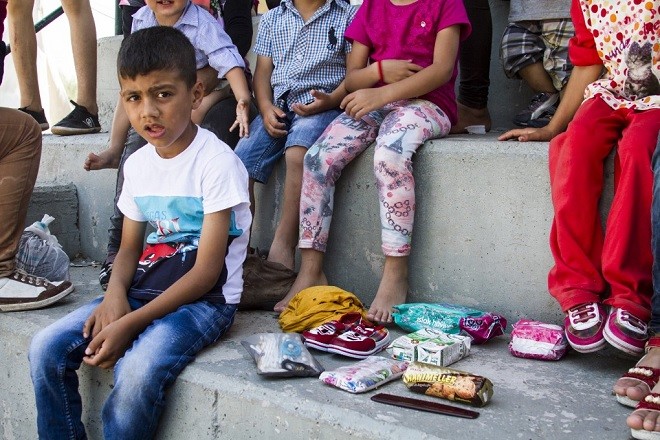
This family lost everything. When they left Syria, each member took
one to two bags. During the course of the journey to Turkey and then
Greece, their boat began to sink. There were seven women, four men and
20 children. They managed to salvage just one bag among them.
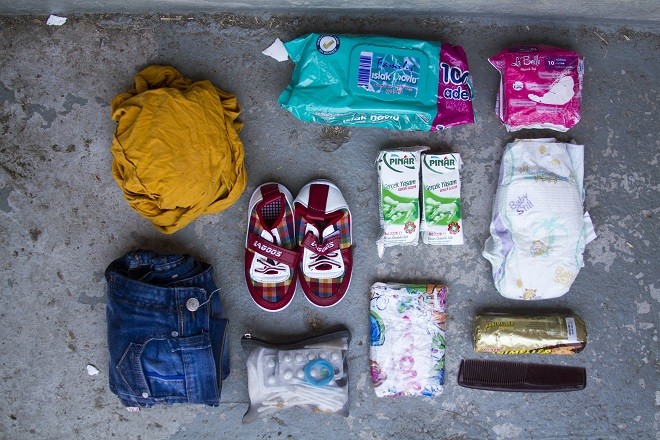
1 shirt, 1 pair of jeans,
1 pair of shoes
Toiletries
1 diaper, 2 small cartons of milk and some biscuits
Personal documents and money
Sanitary pads
A comb
“I hope we die. This life is not worth to live anymore. Everyone closed the door in our face, there is no future.”
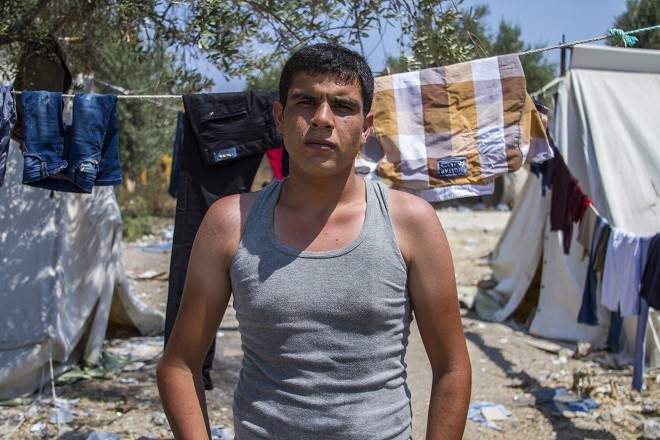
Name: Hassan*
Age: 25
From: Syria
“This is all I have. They told us we could only bring two things, one extra shirt and pants.”
Learn more
about the IRC’s work in Lesbos where we provide clean water,
sanitation, trash removal and protection and information services to
refugees staying in the Kara Tepe camp and other locations on the
island.
*Last names omitted to protect the privacy of those interviewed
The International Rescue Committee
helps people whose lives and livelihoods are shattered by conflict and
disaster to survive, recover, and gain control of their future. At work
in nearly 40 countries and in 25 U.S. cities, the IRC restores safety,
dignity, and hope to millions of families in need.
You can help them with their work and donate here.
Photos by Tyler Jump/International Rescue Committee




